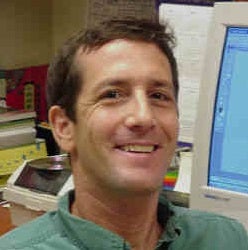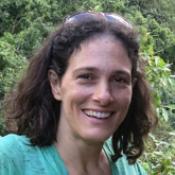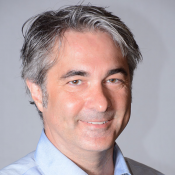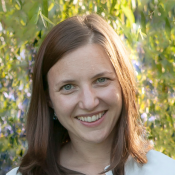Imagine New York without cabs or Beijing without bikes. Imagine city neighborhoods without roads or buses. Now imagine ordering a T-shirt online and having it delivered via flying drone.
Transportation and infrastructure advances change society.
Recognizing the importance of innovation, research and sharing information across disciplines, a group of professors from ASU’s School of Geographical Sciences and Urban Planning have gathered this week for the annual Transportation Research Board meeting to present their findings on some of the most cutting-edge breakthroughs in modern infrastructure.
The sort of forward-thinking going on at the conference is nothing new for ASU experts, whose transdisciplinary research on cities and transportation is advancing the field through innovations that include sustainable cement and new methods for installing utilities pipes, as well as improvements in areas such as transportation habit tracking and relieving traffic congestion.
Faculty from all across the university, including the Ira A. Fulton Schools of Engineering, the Global Institute of Sustainability, the W. P. Carey School of Business, the School of Letters and Sciences, the School of Public Affairs, the Global Technology and Development program and the American Indian Policy Institute are all conducting related work.
At the conference, Geographical Sciences and Urban Planning faculty are discussing everything from safer bike trails to roads in the sky. Here’s a look at some of the work being presented:
Drone delivery
Piggybacking or sky roads?: That’s not a bird or a plane in the sky — it’s an Amazon drone delivering a package.
But before it got to your backyard, a whole host of conundrums needed solving, including how to get it past Phoenix Sky Harbor International Airport without disrupting flights, which route was fastest and whether it’s best go over or around Camelback Mountain.
Michael Kuby
Professor Michael Kuby was most concerned with fuel efficiency.
When it comes to package-delivering drones such as those being tested out by Amazon, they’re either electric (battery-powered) or they’re powered by hydrogen fuel cells. Either way, they need to be lightweight, which means they can’t carry much fuel, and in turn can’t travel very far.
There are two possible solutions to that, Kuby said. One is to have a vehicle that drives the drones around and launches them closer to their destinations so that they don’t have to be refueled as often.
The other — and the one Kuby has created a model for — is for the drone to get from the warehouse to its destination and back without the use of other vehicles or manpower. That requires stations along the way where it can recharge or refuel as needed. Kuby’s model makes it possible to map out the optimal route for the drone, one that ensures cost, fuel and time efficiency.
“It’s a really challenging mathematical optimization problem because drones fly in continuous space,” Kuby said, meaning there could be obstacles — like planes and mountains — to navigate.
While companies like Amazon, FedEx and UPS are still deciding which method they’re likely to use, Kuby said, the time to be thinking about best practices for drone package delivery is now: “This is clearly the direction that the industry is headed.”
Housing
Transportation access: For every thing that makes up a city — from grocery stores, to bike lanes, to power plants — a decision must be made on where to place it.
The same is true for housing. Using data from the city of Tempe, Kuby has developed a model to determine the best location for affordable housing so that low-income residents can easily access jobs via public transportation.
When it comes to placing affordable housing, there are two main objectives, Kuby said: that the location is beneficial to residents (for example, by ensuring nearby access to public transportation to get to their jobs), and that each affordable housing structure is spread far enough apart to negate possible concerns — real or imagined — of surrounding neighborhoods about the effects of such housing on things like property value, crime, etc.
“The innovative part of this model is how we accomplished both of those objectives,” Kuby said.
Pavement and property value: Potholes and poorly patched cracks can be unsightly and annoying to drive on, but what sort of effect do they have on property value? According to assistant professor Deborah Salon, none.
Deborah Salon
Under contract for the Solano Transportation Authority in California, Salon compared data collected on pavement condition with home sales in the same area.
“We tried hard to find a relationship, because it makes sense that there would be,” she said, “but we just were unable to find it.”
It’s the first time the relationship between pavement condition and property value has been scientifically evaluated, and she was surprised at the results, though she hypothesizes that it may be because people consider the condition of the road to be a small factor when buying a house.
“There are a lot of good reasons (road noise, the environment, etc.) to improve roads, but property value is not the main one,” Salon said.
Taxis and ride hailing
Deadheading: In many cities, there are two kinds of cabs: yellow and green. The difference is that yellow cabs can pick up and drop off passengers anywhere in the city, while green cabs can pick up passengers only in limited areas but can still drop them off anywhere in the city.
So when a green cab has to drop of a passenger in an area of town where it is not allowed to pick up passengers, it has to drive back with an empty cab — also known as deadheading. The result is a waste of resources.
David King
Using GPS data collected from green cabs in New York City, assistant professor David King was able to estimate just how often deadhead travel was taking place. Though he cautions the results are more suggestive than absolute, he found that in any given week, about 20 percent of the 350,000 green cab trips made required deadhead travel.
“I was trying to get an estimate of how much excess travel there is, which also has implications for the environment,” King said.
With the rise of ride-hailing companies such as Uber and Lyft, he added, cities need to get a handle on cab regulations before the same thing starts happening to e-rides.
“As taxi cab regulations are being reconsidered in cities, regions and states, we need to take into account that where we allow people to operate both on pickups and drop-offs will affect overall efficiency and environmental costs,” King said.
How do we get around?: Another issue we face with the rise of e-rides and other alternative forms of transportation — such as light rails and biking — is the way in which cities account for new development. In the past, cities based things like the number of parking lots and the amount charged for public transportation on how many cars were on the road. But as more people ditch their Dodge, other factors need to be taken into consideration.
The way things are right now, King said, “We don’t have a good sense for just how people get around.” To change that, there needs to be change in the way cities account for their transit habits.
Biking
Who rides where: It might seem obvious that a small girl is less willing to ride her bike across a busy intersection than a grown man, but proving it — in order to enact positive change — is another thing.
To do so, Salon and researchers took data from the 2010-2012 California Household Travel Survey and compared it with detailed built environment data to look for correlations between behavior and the environment. Though previous studies had also examined that relationship, none had broken down the results based on demographic groups.
Salon’s study focused on three: children, employed adults and non-employed adults (including retired people). Within each group, differences between sexes were also accounted for.
What they found was that there was indeed a correlation between a person’s demographic group and their behavior. Employed men, for example, were more likely to bike in busy areas of a city, whereas women and children were less likely to do so.
What it means, Salon said, is that “if cities want to encourage more cycling, they need to provide safer places for everyone to do it. Safety is a big deal, especially for certain demographics.”
Crowdsourcing safety: Most of the time when someone has a crash on a bike, it’s not reported anywhere, said School of Geographical Sciences and Urban Planning Director Trisalyn Nelson. So when city planners need to prioritize locations of bike lanes or trails, they don’t have all the data they need to help them make those decisions.
Trisalyn Nelson
To help alleviate the problem, Nelson launched BikeMaps.org, a global online mapping tool that allows cyclists to record the location and details of near misses and collisions they experience. But she wanted to go further.
One of the issues “that comes up when you use citizen science as a crowdsource tool is that you don’t get the best representation” of everyone affected by the issue, Nelson said.
Now that she could mine data from the website, she could use it to get a more accurate picture; in particular, Nelson looked at how age and gender are related to the use of BikeMaps.org compared with broader ridership and the geographic distribution of incidents for the Capital Regional District, British Columbia, Canada.
In general, there were higher levels of interaction with the website by younger people, and females and people under 35 years of age reported more incidents in central urban areas.
Nelson was also able to use the data from BikeMaps.org to determine that multi-use trails — where people can bike, skateboard, rollerblade, etc. — have a higher risk of injury compared with cyclist-only facilities. In fact, there was an 11 percent higher instance of collisions at multi-use trail intersections compared with city road intersections.
“There’s an increasing tension between how we move through a city and our health and well-being and happiness,” Nelson said. “If we want healthy populations that are connecting to communities and moving through them in a smart way, this kind of research is really important.”
More Science and technology

ASU professor honored with prestigious award for being a cybersecurity trailblazer
At first, he thought it was a drill.On Sept. 11, 2001, Gail-Joon Ahn sat in a conference room in Fort Meade, Maryland. The cybersecurity researcher was part of a group that had been invited…

Training stellar students to secure semiconductors
In the wetlands of King’s Bay, Georgia, the sail of a nuclear-powered Trident II Submarine laden with sophisticated computer equipment juts out of the marshy waters. In a medical center, a cardiac…

ASU startup Crystal Sonic wins Natcast pitch competition
Crystal Sonic, an Arizona State University startup, won first place and $25,000 at the 2024 Natcast Startup Pitch Competition at the National Semiconductor Technology Center Symposium, or NSTC…




